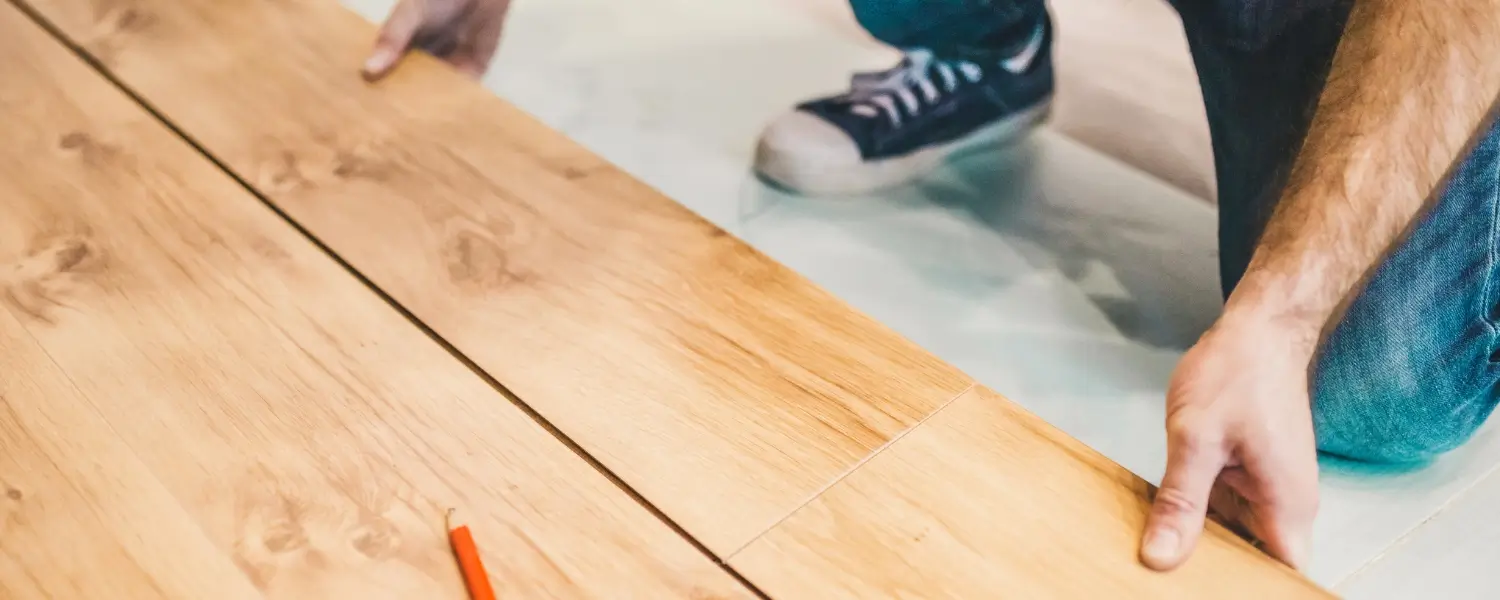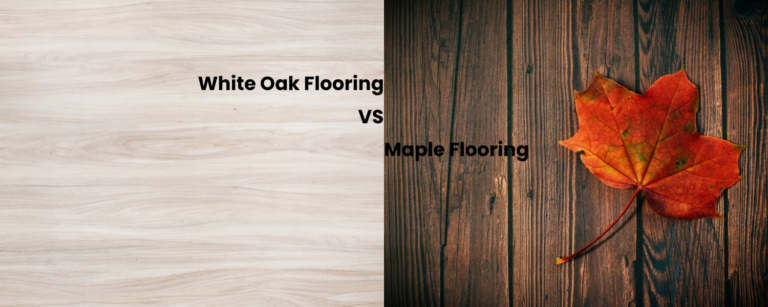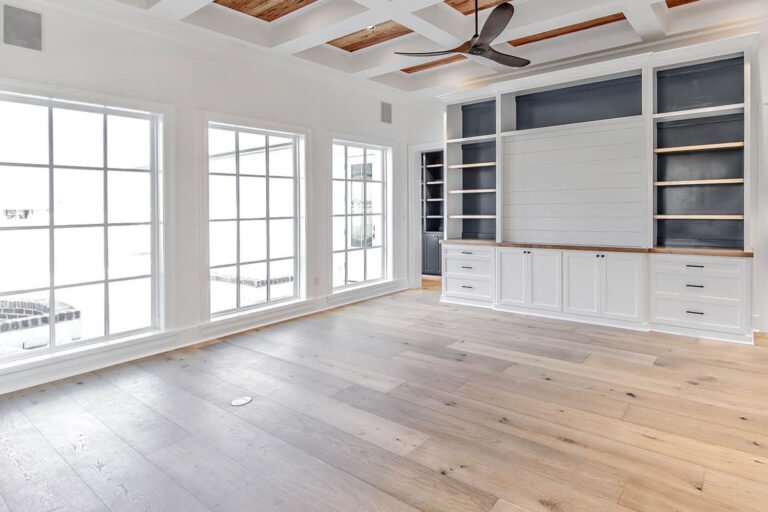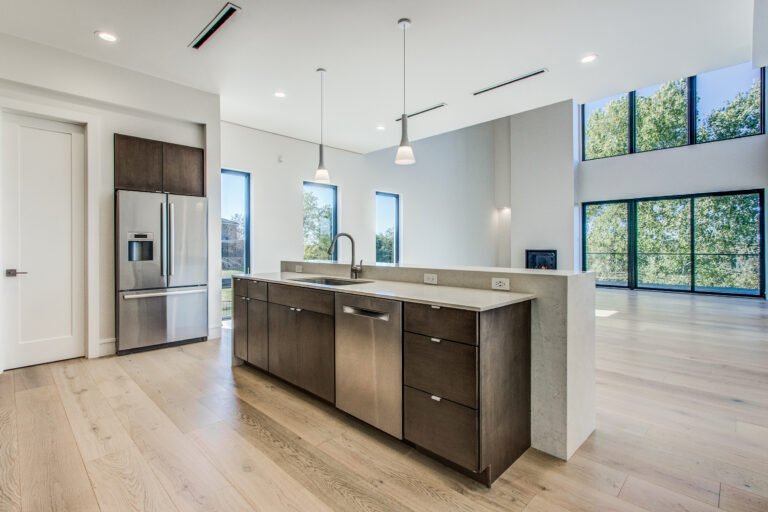What is a Floating Floor? Solve Flooring Issues with This Easy Option
Have you ever wondered, “What is a floating floor?” You might have heard the term if you’re planning a home update or considering new floors. Floating floors aren’t nailed or glued down, offering a unique installation method. This guide will help you understand floating floors and why they might be the right choice for your home.
Understanding Floating Floors
Floating floors are popular among many homeowners because they are versatile and easy to install. Instead of being attached to the subfloor, this flooring “floats” over it. In this article, we will explore what floating floors are and learn about some of the popular types available.
What is a Floating Floor?
A floating floor uses a method of installation in which individual planks or tiles are not nailed or glued to the subfloor. Instead, they are laid over an underlayment, allowing them to freely “float.” This design has several benefits. It is easier to install, flexible, and can expand and contract with changes in temperature and humidity.
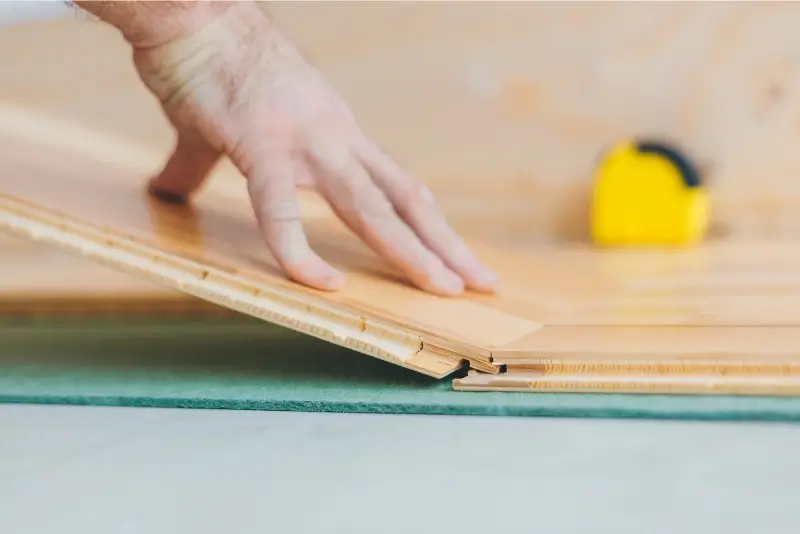
Popular Types of Floating Floors
There are different types of floating floors, each with unique characteristics and advantages. Here are three popular options:
Laminate Flooring
Laminate flooring is a cost-effective choice that resembles the appearance of hardwood, tile, or stone. It has a high-density fiberboard (HDF) core with a photographic layer replicating the desired look. A protective wear layer on top ensures durability and resistance to scratches and stains.
Luxury Vinyl Flooring
Luxury vinyl flooring (LVT) offers a wide range of designs, including wood, stone, and tile looks. It is highly durable, waterproof, and easy to maintain. This flooring is excellent for high-traffic areas and spaces prone to moisture, such as kitchens and bathrooms.
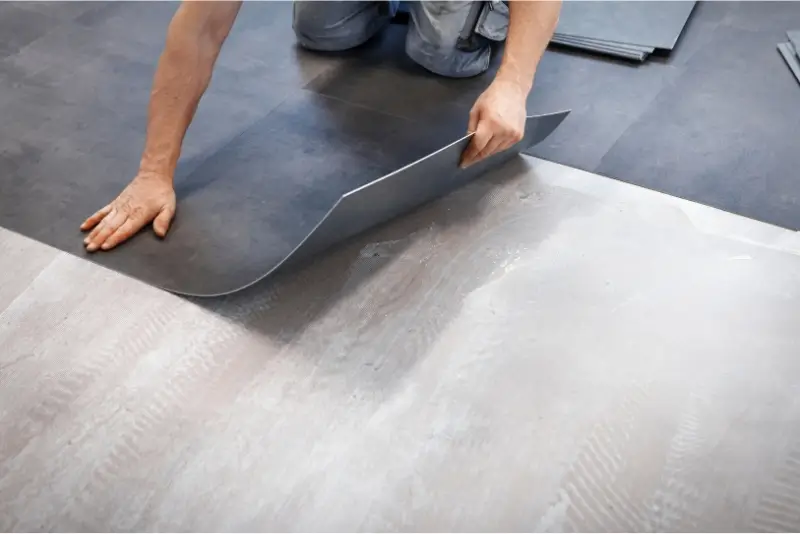
Engineered Hardwood Flooring
Engineered hardwood flooring combines the timeless beauty of hardwood with enhanced stability and moisture resistance. It consists of multiple layers of wood veneer pressed together, with a top layer of real hardwood. This construction allows for greater flexibility and makes it suitable for installation in areas where we do not recommend solid hardwood. We can also install this flooring over a radiant heating system.
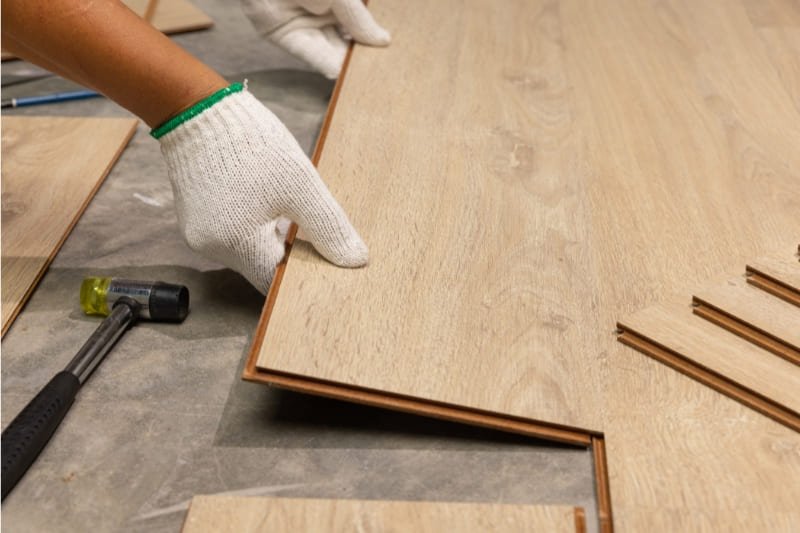
Installation Insights: How Floating Floors Work
Installing a floating floor is simple and can be done by DIYers or professionals. This section will guide you through the step-by-step installation process, the role of the underlayment, floor movement, and sound management techniques to reduce noise transmission.
Step-by-Step Installation Process
Installing floating floors involves the following steps:
- Prepare the Subfloor: Ensure the subfloor is clean, flat, and free of debris or imperfections to provide a smooth base.
- Lay the Underlayment: Place the appropriate underlayment over the subfloor for cushioning, sound absorption, and moisture protection.
- Acclimate the Flooring: Allow the flooring materials to adjust to the room’s temperature to prevent warping.
- Start Installation: Begin laying the first row of planks or tiles along the longest wall, using spacers to maintain a consistent gap. Interlock the pieces following the manufacturer’s instructions.
- Continue Installation: Work row by row, staggering the end joints for a seamless look. Use a tapping block and rubber mallet to secure the pieces in place.
- Complete the Installation: Once you lay all the flooring, remove the spacers and install any necessary transition pieces or molding to finish the edges and transitions between rooms.
Underlayment: Its Role and Importance
Underlayment is a critical component of floating floor installations. It serves many purposes, including:
- Cushioning: Provides a comfortable feel underfoot.
- Moisture Protection: Acts as a barrier against moisture, extending the life of the flooring.
- Sound Absorption: Reduces noise transmission, creating a quieter room.
How Floating Floors Handle Expansion
Floating floors expand and contract with changes in temperature and humidity. An expansion gap is left around the room’s edges during installation to accommodate this movement. The flooring’s design allows adjustment without buckling or warping.
Sound Management: Minimizing Noise Transmission
One advantage of floating floors is their ability to reduce noise compared to traditional flooring. It is due to the sound-absorbing properties of the underlayment used.
Proper selection and installation of underlayment are key to effective sound management. They absorb impact noise from footsteps and minimize sound transfer between floors, creating a quieter living environment.
Exploring the Benefits of Floating Floors
Floating floors have numerous advantages, making them popular for homeowners and businesses. This section will highlight their benefits, including easy installation and design versatility.
Easy Installation
One major advantage of floating floors is their simple installation process. Unlike traditional flooring that requires nails or glue, we can quickly install floating floors using an innovative click-lock system. It makes them ideal for DIY enthusiasts and those looking to save on installation costs.
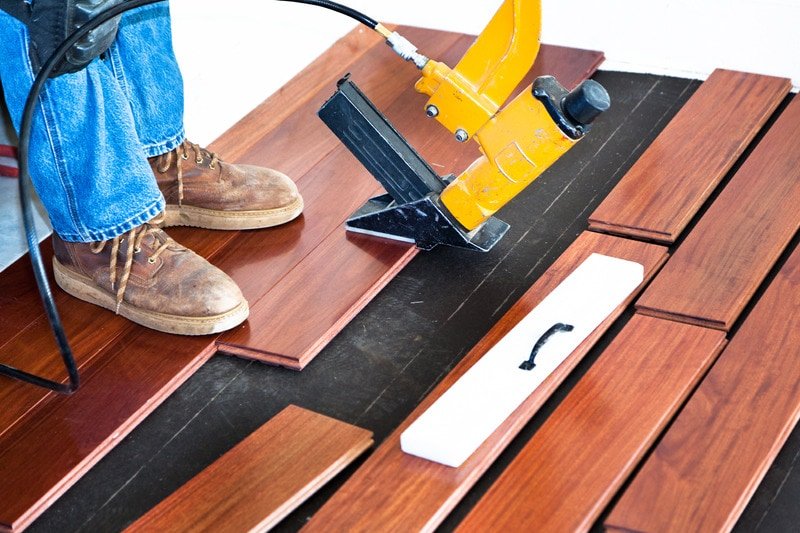
Cost-Effectiveness
Floating floors are often more affordable than solid hardwood or tile options. The materials are cost-effective, and the installation process is quicker, requiring less labor.
If you want to learn about the cost of engineered hardwood, read our other blog, “Decoding Costs: How Much Does Engineered Hardwood Flooring Cost?“
Design Versatility and Material Options
Floating floors come in a variety of designs, styles, and materials. You can choose a flooring option that matches your preferences and decor. Whether you prefer the appearance of hardwood, tile, or stone, there is a floating floor option to suit your needs.
Durability
Floating floors are durable and strong. The protective wear layers resist scratches, stains, and fading, ensuring your floors maintain their appearance over time.
Low Maintenance
Maintaining floating floors is simple. Regular sweeping or vacuuming to remove dirt and debris and occasional mopping using a damp mop are sufficient. This low maintenance requirement makes floating floors convenient for busy households and commercial spaces.
Potential Drawbacks of Choosing Floating Floors
While floating floors offer several benefits, it’s important to consider their potential drawbacks to make an informed decision. Let’s explore some of the drawbacks:
Lifespan Comparison: Limited Longevity
One factor to consider when choosing floating floors is their lifespan compared to other flooring options. While floating floors are durable and can last many years, solid hardwood or tile floors may have a different longevity. Over time, the wear layer may show signs of wear and tear, requiring replacement or refinishing.
If you want to learn about the lifespan of engineered hardwood, read our other blog, “How Long Does Engineered Hardwood Last?“
Movement and Noise Issues
Floating floors can adjust themselves with temperature and humidity changes. However, this movement can sometimes result in creaking or squeaking noises, especially in areas with fluctuating environmental conditions. While underlayment can help reduce noise transmission to some extent, it may not eliminate these sounds.
Suitability for Different Locations
While floating floors are versatile and can be installed in various locations, they may only be suitable for some environments. For example, we do not recommend engineered hardwood flooring for areas with high moisture levels, such as bathrooms or laundry rooms.
Detailed Comparisons: Floating Floors vs. Other Methods
Choosing the right flooring means understanding the options. To help you decide, compare floating floors with glue-down and non-floating floors.
Floating vs Glued Down Flooring
| Feature | Floating Floors | Glue-Down Floors |
| Installation | Easier, no glue or nails | Requires Adhesive |
| Cost | Generally cheaper | Often more expensive |
| Installation Time | Faster | Generally takes more time |
| Durability | May not last as long | Longer-lasting |
| Maintenance | Easier to replace damaged pieces | Difficult to repair damaged pieces |
| Noise Transmission | May be noisier | Generally quieter |
| Moisture Resistance | Varies by material | Depends on adhesive quality |
Non Floating vs Floating Floors
| Feature | Floating Floors | Non-Floating Floors |
| Installation | Easier and quicker | Requires more preparation |
| Cost | Generally cheaper | Generally more expensive |
| Installation Time | Faster | Take longer to install |
| Durability | May not last as long | Longer-lasting |
| Maintenance | Easier to maintain | Requires more frequent upkeep |
| Noise Transmission | May be noisier | Generally quieter |
Situational Recommendations: When to Choose Each Type
- Floating Floors: Best for DIY projects, quick installation, and spaces with stable temperatures and humidity.
- Glue-Down Floors: Recommended for spaces needing the most durable, long-lasting flooring (think commercial areas or high foot traffic). Suitable for kitchens, hallways, and retail spaces.
- Non-floating Floors: Best for moisture-prone areas like basements or rooms with high humidity. Ideal for bathrooms, laundry rooms, and below-grade installations.
Maintenance Guide: Repairing and Replacing Floating Floors
Keeping your floating floors in good shape is easy, but sometimes, you might need to fix damage or replace sections. Here’s how:
- Repairing Minor Damage: A repair kit made for your flooring type can fix small scratches or dents. Follow the kit’s instructions closely.
- Replacing Damaged Sections: You can replace individual planks or tiles for larger damage. Remove the damaged pieces and install new ones as you did during the initial installation.
- Professional Assistance: For major repairs or replacements, it might be best to talk to a professional flooring installer. They have the experience and tools to do the job right.
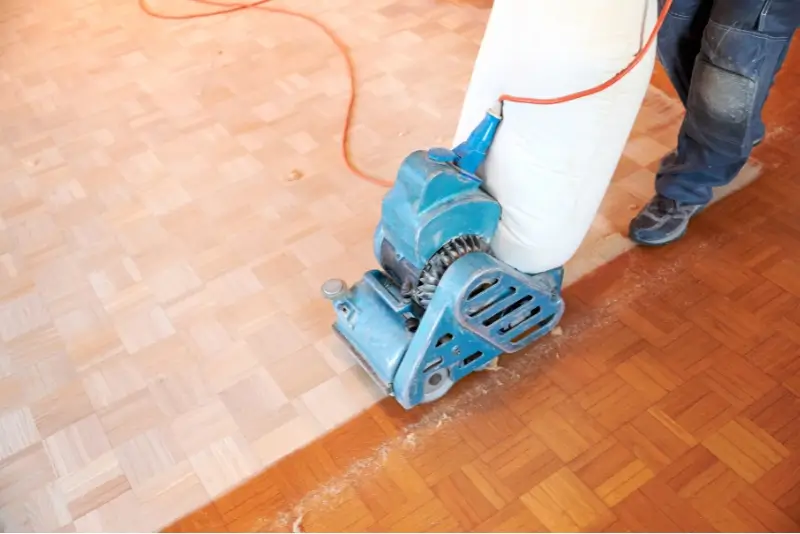
Is a Floating Floor the Right Choice for You?
In this guide, we’ve covered floating floors, the different types, how to install them, their pros and cons, and things to consider before choosing them. Floating floors offer a variety of benefits and a budget-friendly flooring solution. They’re easy to install, come in many designs, and need minimal upkeep, making them a popular choice. However, weighing the benefits and drawbacks is important to ensure they’re right for you.
Villagio Wood Floors, located in California, specializes in engineered hardwood flooring, an excellent option for those considering floating floors. Our engineered hardwood combines the timeless beauty of real wood with enhanced stability and moisture resistance, making it suitable for various applications. With our wide range of designs and materials, we offer a flooring solution that meets your preferences. Partner with Villagio Wood Floors and elevate your space with engineered hardwood flooring.
What is a Floating Floor? – FAQs
Can I install floating floors over existing flooring?
Yes! If the surface is clean, flat, and level, you can install floating floors over existing flooring. It will save time and money on demolition and preparation work.
Do floating floors require special cleaning methods?
Floating floors do not require special cleaning methods and are easy to maintain. Regular sweeping or vacuuming and occasional mopping with hardwood cleaner are enough to keep them looking their best.
Are floating floors suitable for humid environments?
You can install floating floors in humid environments. However, they must comprise waterproof material, such as luxury vinyl. Proper installation and a moisture barrier can also help mitigate potential moisture issues.
Do floating floors come with warranties?
Many manufacturers offer warranties on their floating floors, covering defects in materials and artistry. Read the warranty terms and follow the recommended installation and maintenance guidelines to ensure your warranty remains valid.
Can I refinish a floating floor?
You can refinish some floating floors, like engineered hardwood. Check the manufacturer’s guidelines to determine if you can refinish your flooring.
Do floating floors feel different underfoot compared to traditional floors?
Floating floors can feel slightly different underfoot compared to traditional floors, especially if installed over an underlayment that provides cushioning. However, the difference is very minor and becomes less noticeable over time.

